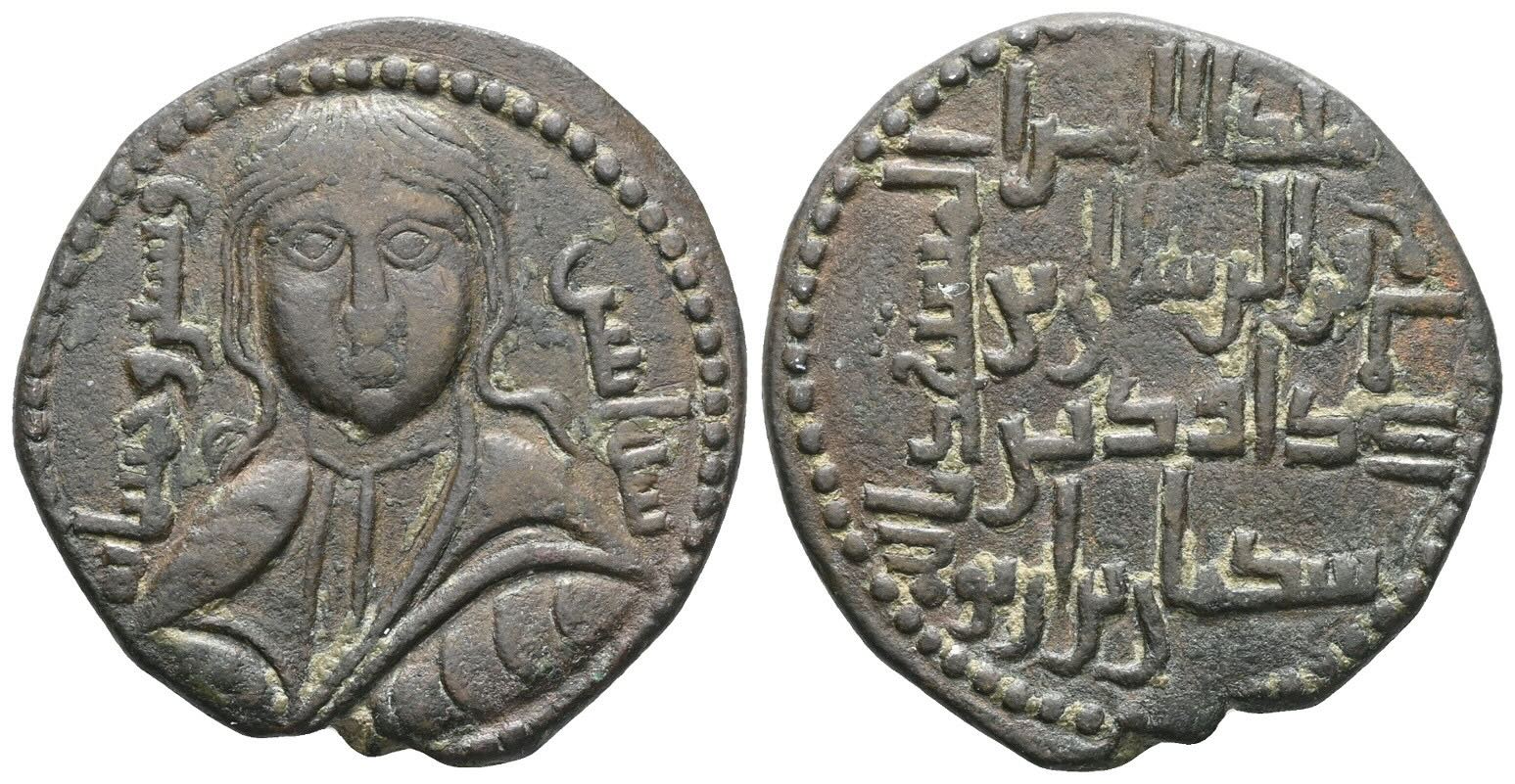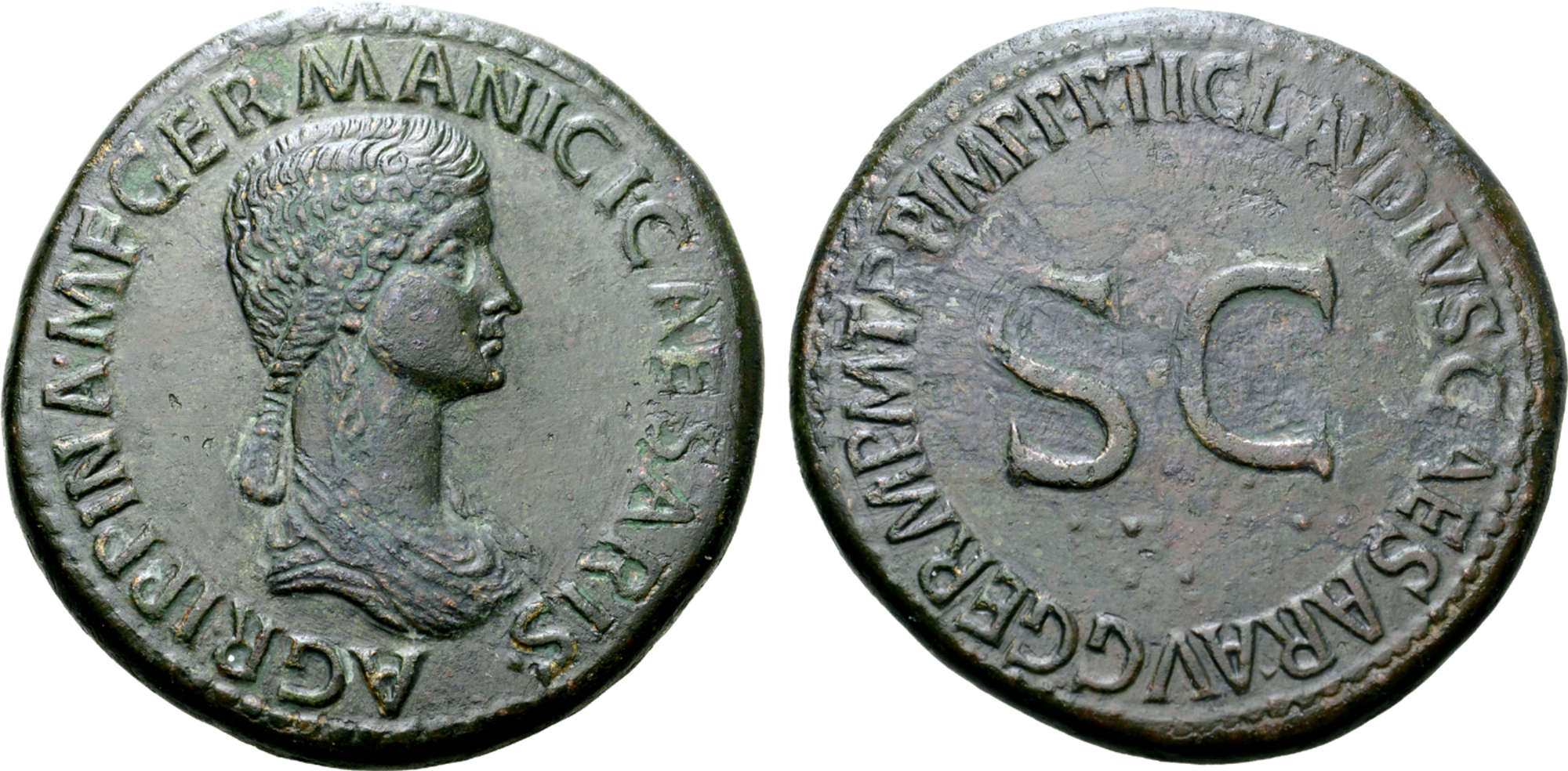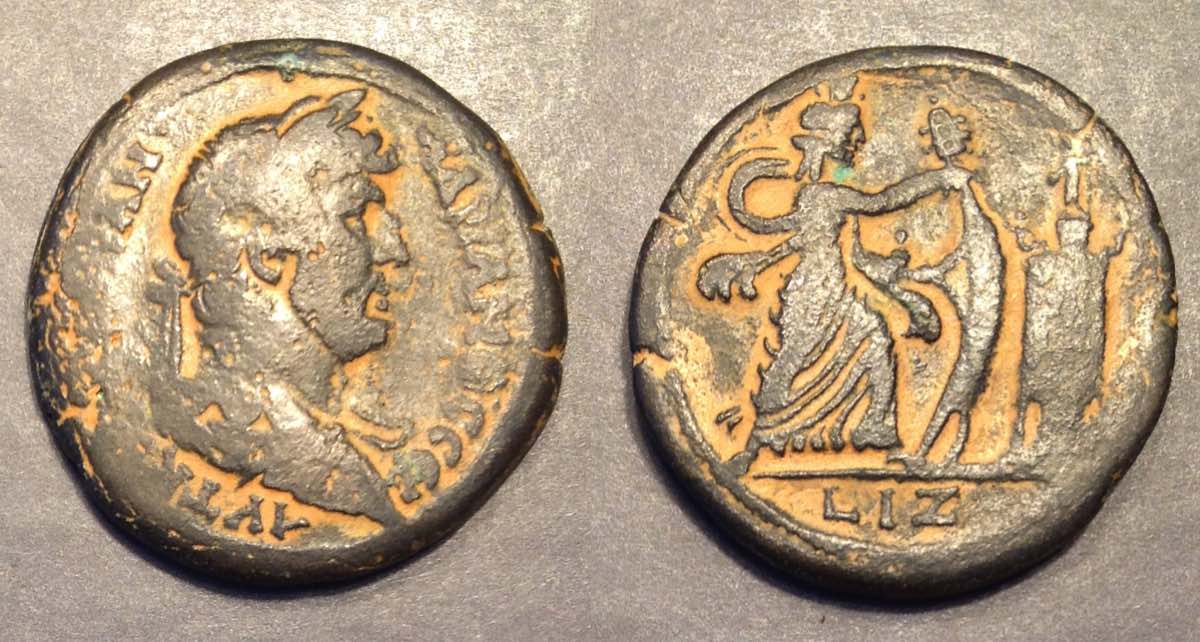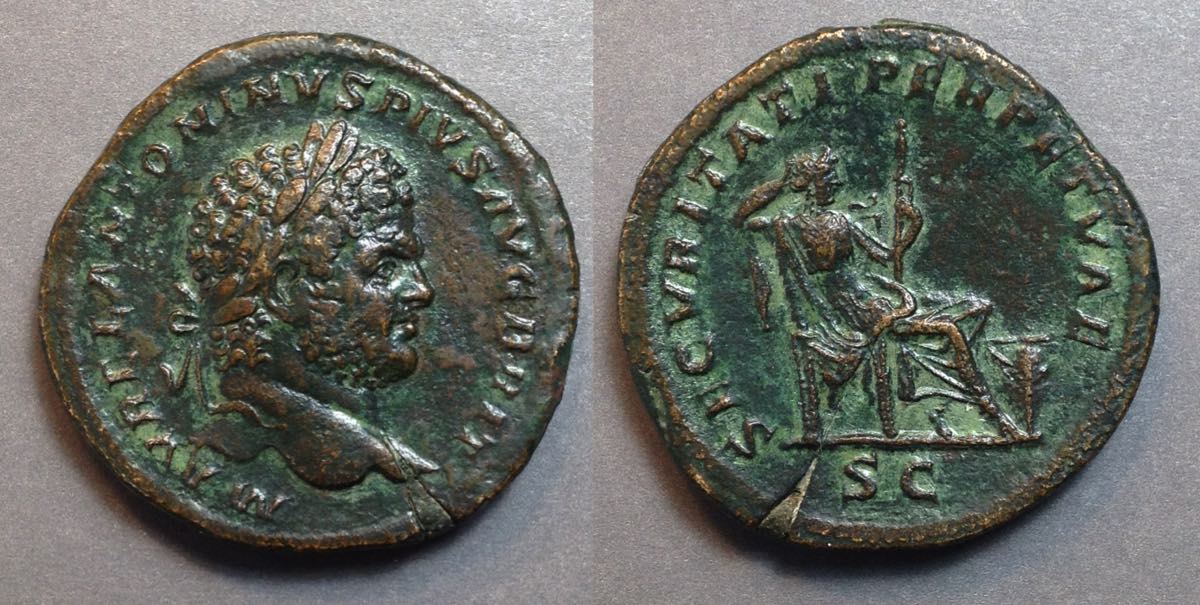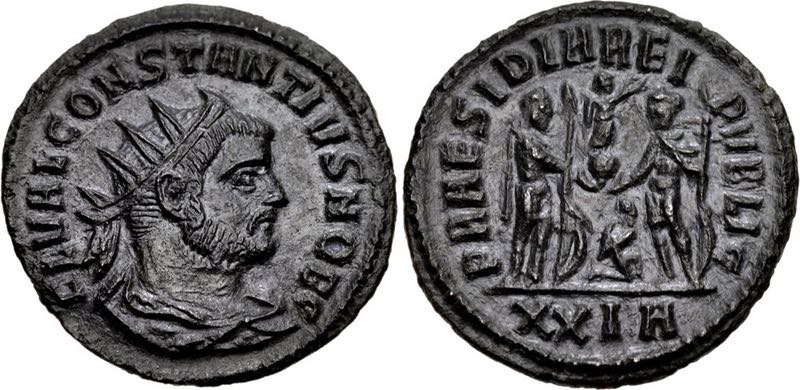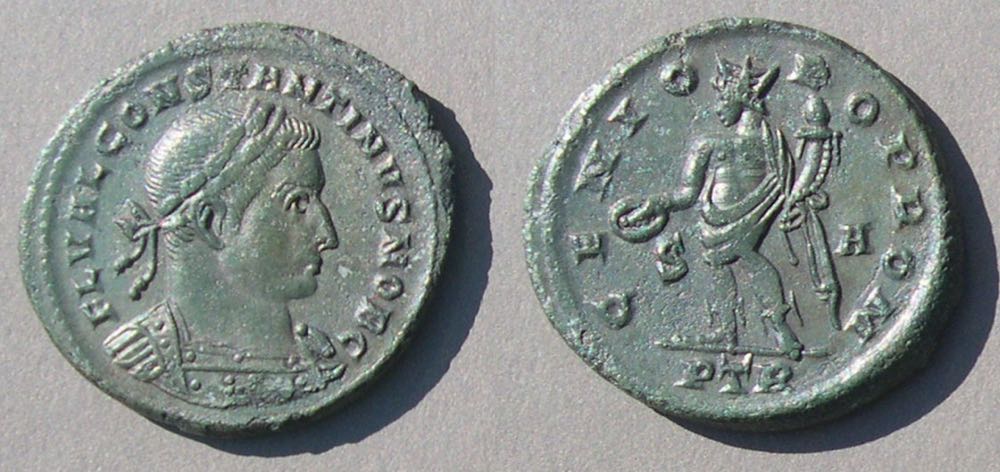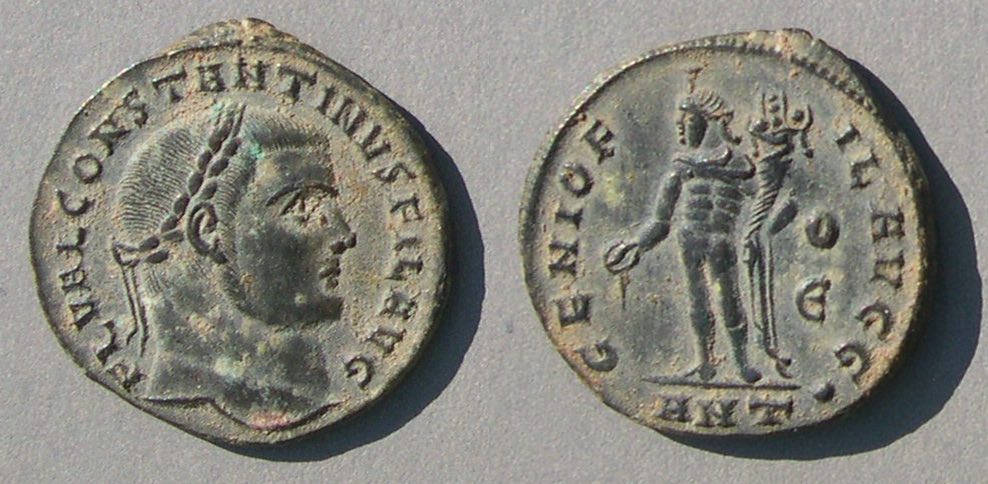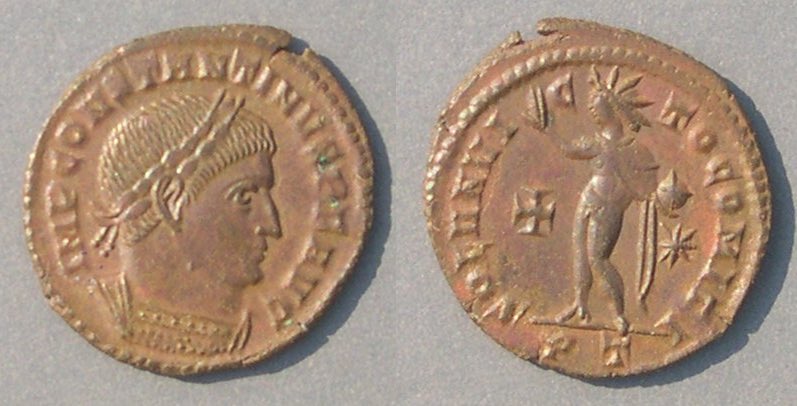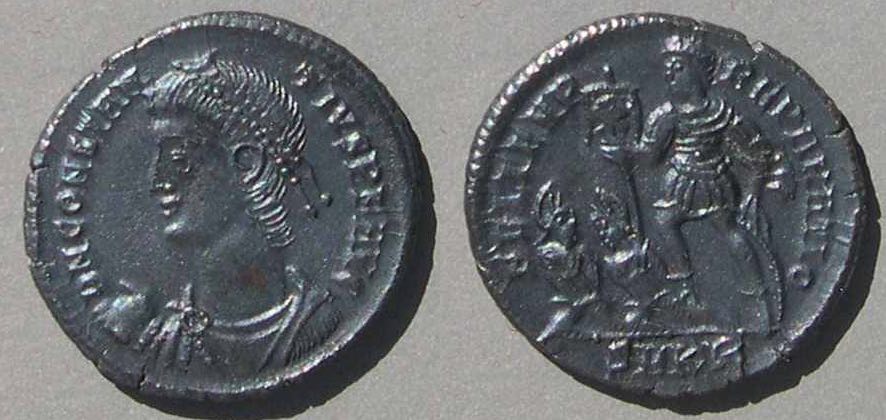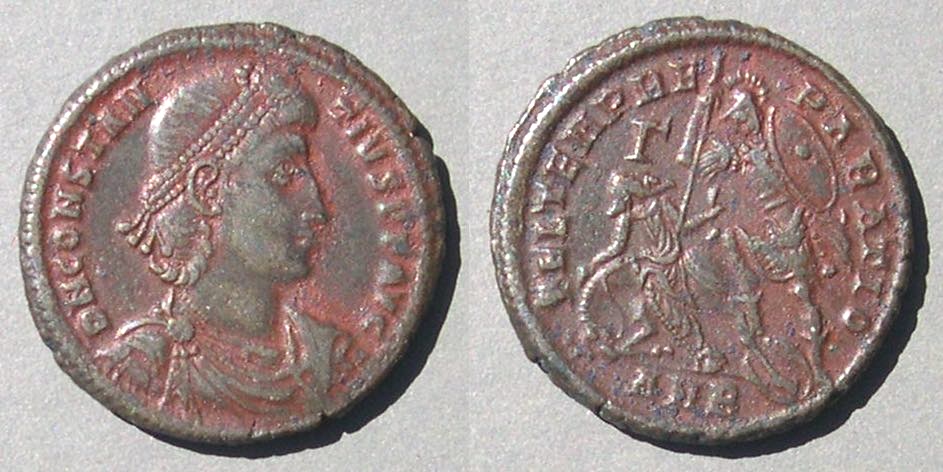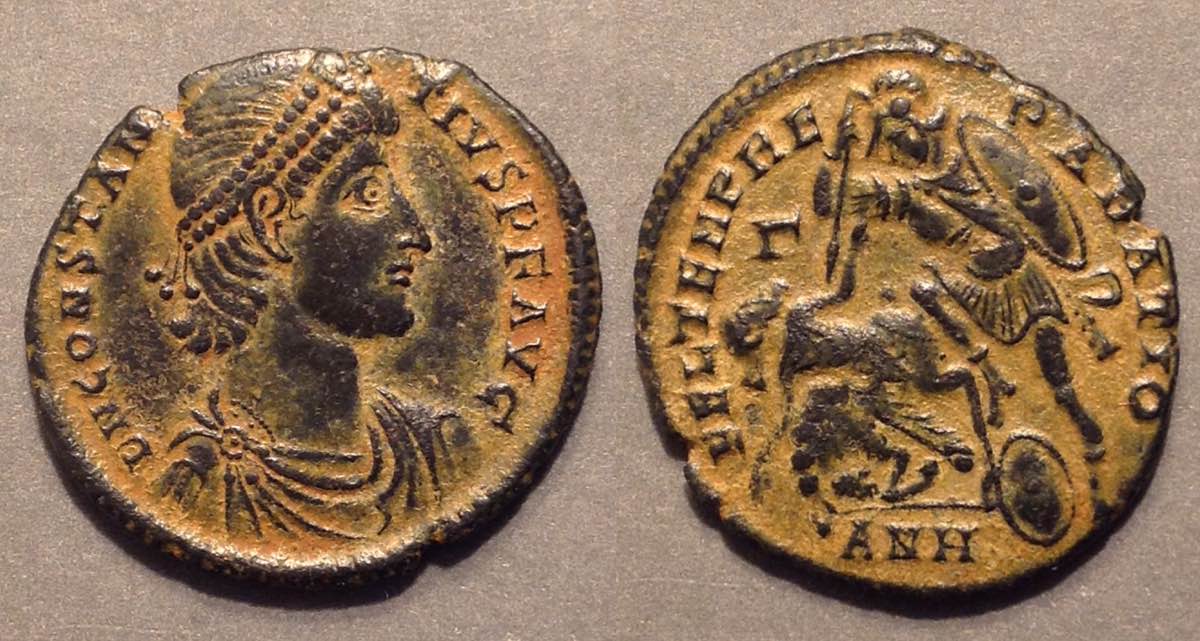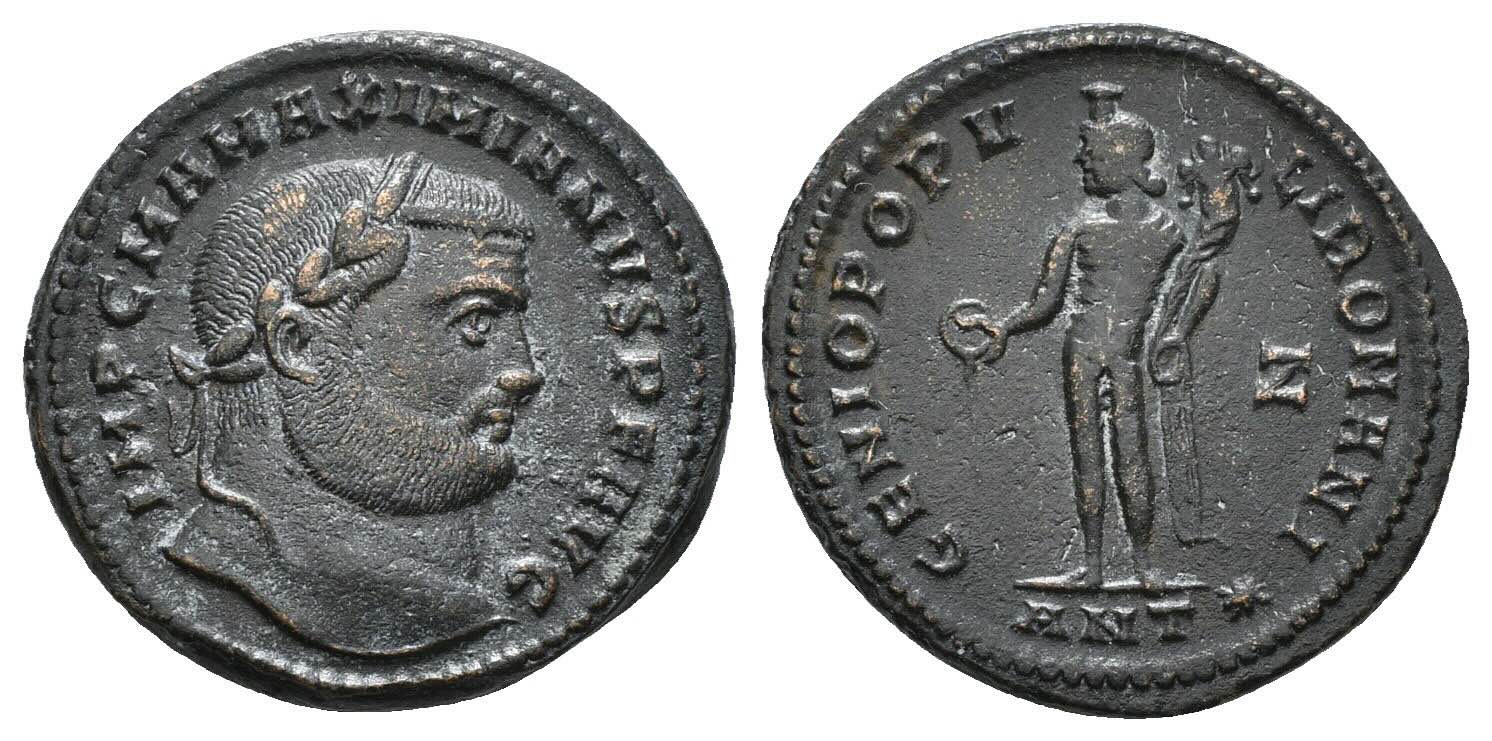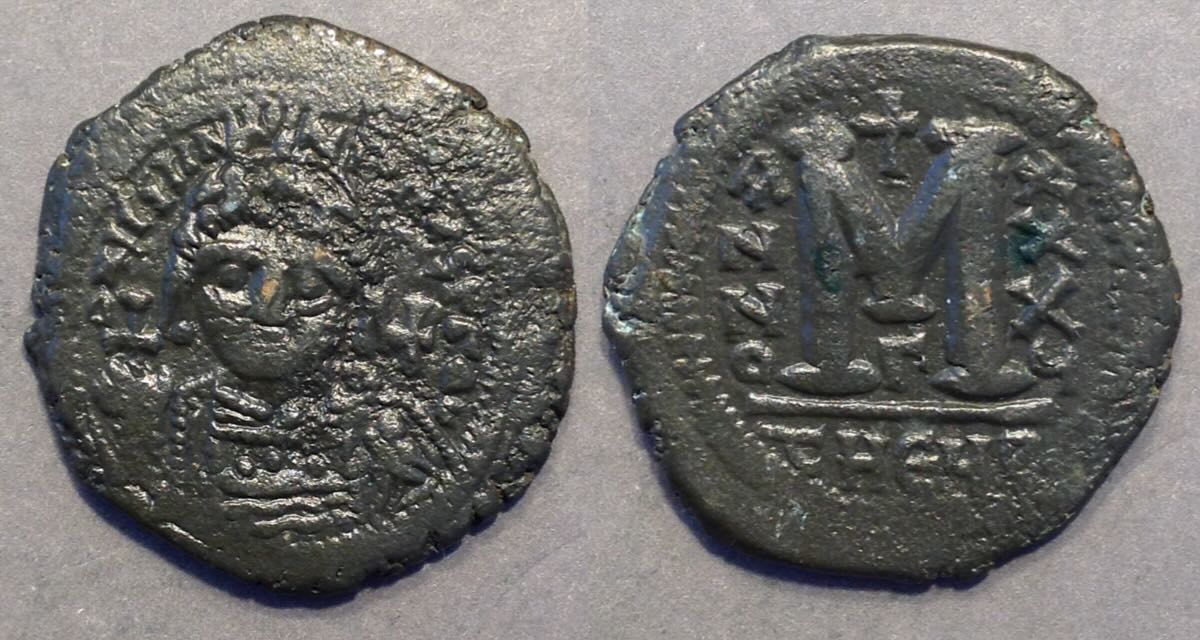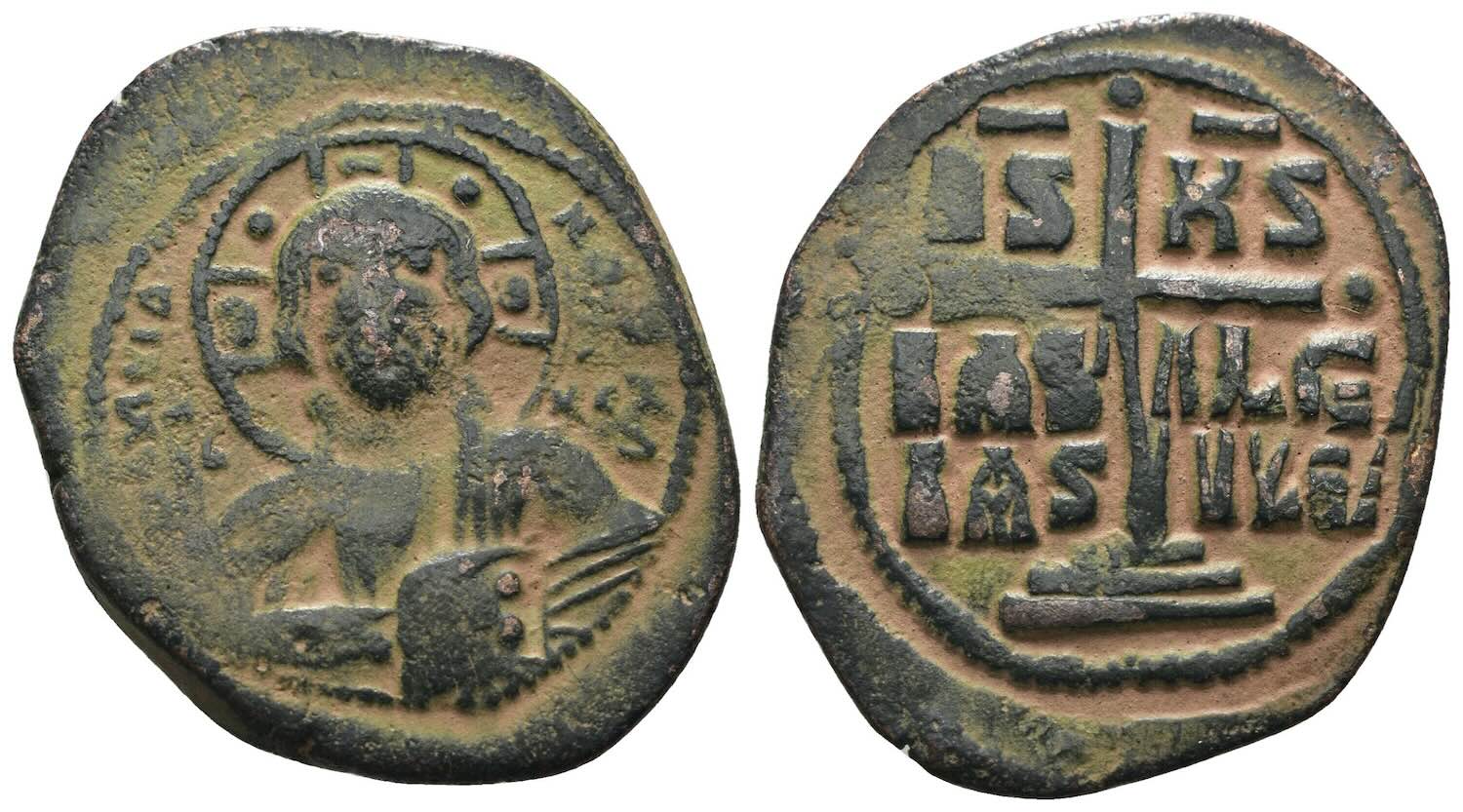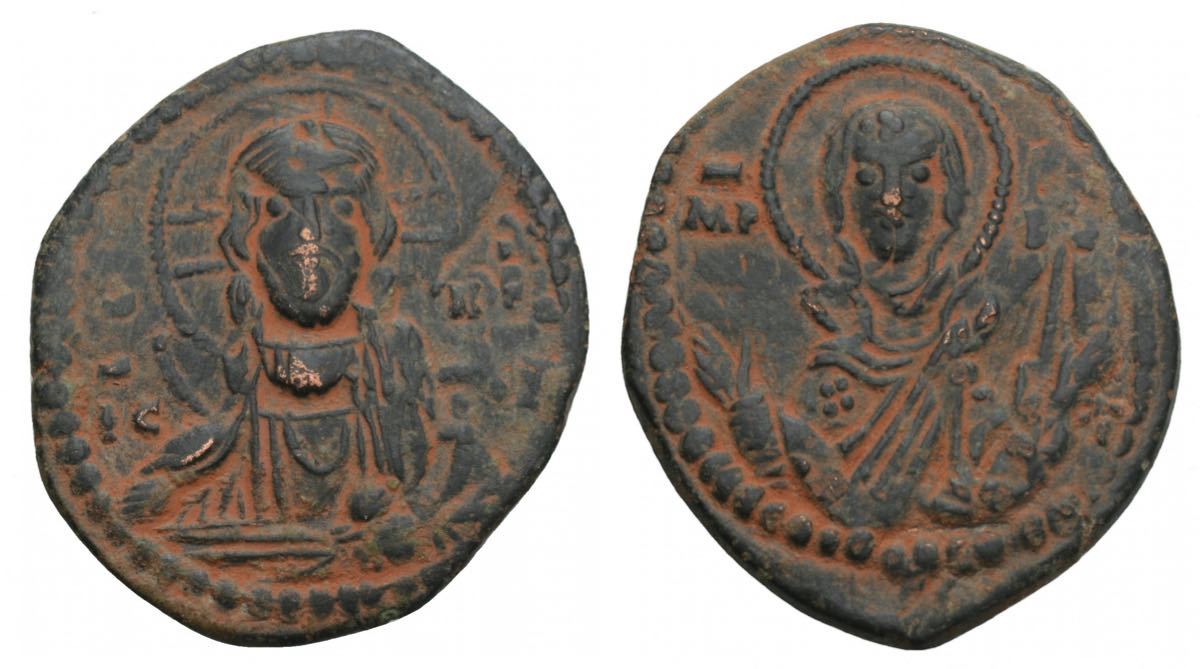I think some have had their surfaces substantially altered. If you haven't slowed down to judge them, you will learn more if you pause here and go back and take the time to decide which ones you think have been altered beyond normal cleaning.
Which surfaces have been improved? Which were made worse? Which were not altered?
I do not have the answers to the questions. I do not claim to be an expert on repatination and I don't know how it is done. But, you will have to make do with this attempt to be informative because the people who know more about surface alterations are not writing web pages about it. (Please let me know about any sites that bear on this issue.)
I share my thoughts here. On most I do not claim to know. I ran it by a group of several expects and have incorporated their thoughts.
Coin 1 (Turkoman): This coin was probably somewhat encrusted and cleaned down, with some abrasion (see the scratch at 12:00 on the obverse), and leaving some encrustation to nicely outline the lettering, to its copper toned surface and then retoned to be even brown. It is possible the light encrustation that highlights the lettering was there originally and not removed, but it is also possible it was added after the retoning.
Coin 2 (Agrippina Sr.): Under high magnification I do not think this coin is tooled in the hair, but it has been much smoothed in the fields and metal moved between the lettering, especially 3:00-4:00 on the obverse. The drapery has been scraped along pre-exiisting lines. So, there is tooling, but not on the portrait. Much of the surface was scraped so the entire surface had to be recolored.
Coin 3 (Hadrian): Repatinated with modern yellow-orange color applied to make details more visible. The coins was stripped to metal (very well), but not tooled or smoothed. Then the highlights were applied.
Note on highlights: The product titanium-chrome is much like paint. You can put it on your fingers and smear it across the coin and have it create highlights like these. Less chrome and it is white. More chrome and it is yellow or even orange. This surface is water-based and can wash off with water, or with acetone.
Note: If you have a coin with this surface and you like it the way it is, do not wash the coin!
Coin 4 (Caracalla): Some say the surfaces have been minimally smoothed, but the overall coin is not tooled. I think the fields have been rubbed to yield the even dark brown, but the relief has not been rubbed the same way so the green remains. It is uncertain if the green was there originally and rubbed away in the fields, or applied after cleaning.
Coin 5 (Constantius radiate): Nearly uncirculated. I thought it was once silvered and has tarnished to black. Not altered. However, my consultants think it was toned black with an applied sulfer compound.
Coin 6 (Constantine, green): I think this is an original hard-green patina. It was bought in London and English finds often have this type of green patina. Everyone agreed.
Note on English green patina: In the old days (maybe 1970s-1980s) many coins were found in the ground in England with excellent green patinas. Now, with 40 more years of fertilizers applied to fields, many finds are corroded away and detectorists report fewer pristine coins.
Coin 7 (Constantine as FIL AVGG): Nicely cleaned. The surface is not altered.
Coin 8 (Constantine, rust colored): I thought this was original. Very unusual, but original. However, experts tell me that that color of surface can be easily created with the right chemical treatment and this coin was likely repatinated. If so, I think the surface is too nice to have been chemically "stripped." Rather, the surface was already nice and smooth but with some other color.
Coin 9 (Helena black-and-tan): I think this is an original middle-east type of patina. Bought in 1988 at Spink's. It was agreed that this "desert patina" is original.
Coin 10 (Constantius II gray): I thought maybe it was silvered and toned (tarnished) naturally to gray. Others thought it was cleaned and chemically treated to turn it gray. It is not an "applied" gray like the Hadrian had a yellow substance applied. One consultant said that surfaces with percentages of iron can tone gray.
Coin 11 (Constantius II reddish): I think this is original. I bought it in 1979 at a "pick" price from a huge batch in a large bag and others did not have this surface. Some thought the red was modern, but I am convinced it is not modern.
Coin 12 (Constantius II black-and-tan): I bought this in 1992 thinking is was a lovely original black-and-tan patina. Many coins in bags from middle eastern wholesalers at that time had this sort of surface and I didn't think they knew how to, or bothered to, fake it. Did they?
Comment on repatination. Genuine patina is hard and impervious to both water and acetone. If you have a coin that looks a lot like this and you wash it, if it is genuine, it will emerge exactly the same. If the surface comes off, it was applied in modern times. Titanium-chrome paint is used very frequently now with some auctions having many of their coins "repatinated" like coins 3 (Hadrian), 15 and 16 (Byzantine).
I removed the "repatination" from one coin. See the results on a second page.
Coin 13 (Maximian follis): "Tough to say." Pretty close to original after cleaning. The slight whitish highlighting in the hair might be the remains of cleaning or might be recently added.
Coin 14 (Justinian): I know this one was "painted" green. The surface green smears and comes off with acetone. The dealer has too many coins of radically different eras with this surface. I wanted it for the type anyway.
Coin 15 (Byzantine Class B): Repatinated with modern color applied to make details more visible.
Here is a CoinTalk thread which shows that some dealers apply modern surfaces:
https://www.cointalk.com/threads/from-a-to-z-and-orange-to-yellow.290945/
Coin 16 (Byzantine Class G): This is a high-grade coin for the type. I thought it was cleaned to a lovely dark green surface and then the color was so even it was hard to see, so it was repatinated with a light coat of modern orange color applied to make details more visible. But others think the green is too thin (as evidenced at the noses) to be original. They think it was stripped, repatinated green, and then had further orange applied.
Coin 17 (Leo III): Cleaned a bit too far so it is too coppery. By the way, Deller's Darkener did not tone it down. One consultant thought it had been all encrusted all black and possibly mechanically cleaned, leaving that much black. Another agreed it had been encrusted all black, but thought it had been subject to electrolysis. Another thought it might have been stripped entirely and had some black reapplied to highlight the details. I thought it had been largely black and subject to a mild acid (lemon juice) which would have eventually made it bright copper, but the process was stopped to leave it at this stage. I now tend toward the electrolysis explanation.
Alterations: Good or Bad? Some surface alterations are unacceptable. Substantial tooling comes to mind. This page does not consider coins with "smoothing" or "tooling" (which I discuss elsewhere). I began this page in response to concerns about "repatination" which is very common now on the market. In many cases I like the result of repatination but I think many collectors don't approve of it.
All my consultants disapprove of tooling--cutting into the metal to create details. No one loves "smoothing", but everyone recognizes it is common, esecially on sestertii, and it is not totally disqualifying, negative as it is. On the other hand "repatination" using chemicals to change the surface appearance without cutting details or scraping the surface is more controversial. Some like it when the coin becomes more visible. Some argue that some types of repatination are "reversable" so those types are okay. Others, like me, think a high percentage of ancient coins have had their surfaces chosen in modern times by whomever cleaned them, so why not choose an attractive surface? If you are going to tone a coin and have the choice of an even flat gray or a highlighted black-and-tan, why choose gray? (Well, you won't be accused of trying to make the coin look better than it is.)
